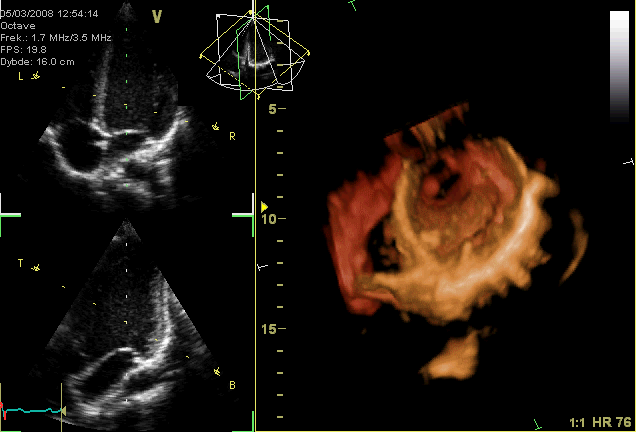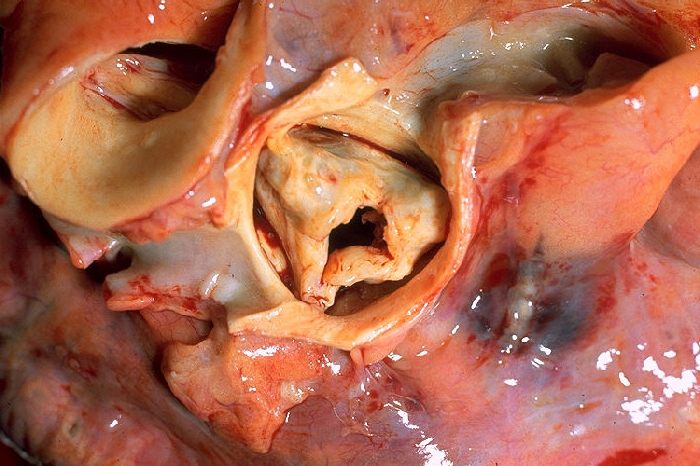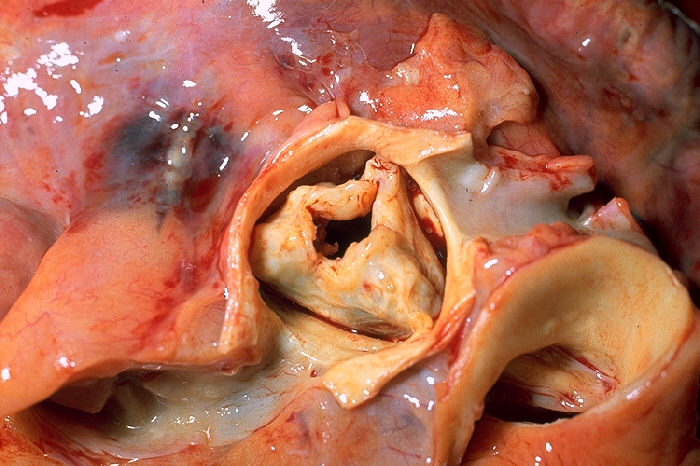Percutaneous aortic valve replacement (patient information): Difference between revisions
No edit summary |
|||
| Line 12: | Line 12: | ||
* Does not open fully, restricting blood flow ([[aortic stenosis]]). | * Does not open fully, restricting blood flow ([[aortic stenosis]]). | ||
<br> | <br> | ||
<br> | |||
==Why is PAVR performed?== | ==Why is PAVR performed?== | ||
Revision as of 22:01, 14 July 2009
Please Take Over This Page and Apply to be Editor-In-Chief for this topic: There can be one or more than one Editor-In-Chief. You may also apply to be an Associate Editor-In-Chief of one of the subtopics below. Please mail us [1] to indicate your interest in serving either as an Editor-In-Chief of the entire topic or as an Associate Editor-In-Chief for a subtopic. Please be sure to attach your CV and or biographical sketch.
What is PAVR?

Percutaneous aortic valvular replacement (PAVR) is a minimally invasive procedure that is performed to replace the aortic valve in your heart by implanting a prosthetic valve inside of it [1]. The aortic valve is what keeps the blood flowing from your heart and into the aorta, and keeps it from leaking back into your heart.
When the aortic valve needs repair, it either:
- Does not close all the way, allowing blood to leak back into your heart (aortic regurgitation).
- Does not open fully, restricting blood flow (aortic stenosis).
Why is PAVR performed?
PAVR may be done for the following reasons:
- Changes in your aortic valve are causing major heart symptoms, such as angina (chest pain), shortness of breath, syncope (fainting spells), or heart failure.
- Tests show that changes in your aortic valve are beginning to seriously harm how well your heart works.
- Your heart valve has been damaged by endocarditis (infection of the heart valve).
- Your have other pre-existing health conditions that qualify you as ineligible for an open heart (Aortic valve replacement) surgery.
A minimally invasive procedure has many benefits. There is less pain, blood loss, and risk of infection. You will also recover faster than you would from open heart surgery.
How is PAVR performed?
The PAVR procedure takes place in the catheterization lab [2]. It is performed by inserting a balloon catheter into the femoral artery, located in the groin area. The catheter, equipped with a compacted prosthetic valve, is then directed into the heart chambers. The prosthetic valve is placed over the diseased aortic valve. The balloon is then inflated to fix the prosthetic valve in the desired position [3].
Risks and complications
The following risks and complications may arise from a PAVR procedure:[4]
- Leaking around the mitral valve
- Shock
- Tearing of the mitral valve
- Embolization of the prosthetic valve
- Paravalvular aortic regurgitation
- Blockage of the opening of the coronary artery
Related diseases


- Aortic stenosis [5]
- Rheumatic heart disease
- (Congenital) bicuspid aortic valve
Contributing diseases and conditions
- Endocarditis [6]
- Myxomatous degeneration
- Trauma to your valves

References
- ↑ http://my.clevelandclinic.org/heart/percutaneous/percutaneousvalve.aspx
- ↑ http://my.clevelandclinic.org/heart/percutaneous/percutaneousvalve.aspx
- ↑ http://my.clevelandclinic.org/heart/percutaneous/percutaneousvalve.aspx
- ↑ "Complications of percutaneous aortic valve replacement: experience with Cribier-Edwards percutaneous heart valve".
- ↑ http://www.scai.org/pdf/AR_12-04_SCAI_Brodsky.pdf
- ↑ http://www.scai.org/pdf/AR_12-04_SCAI_Brodsky.pdf